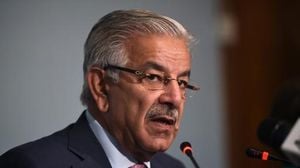Europe is set to make significant strides toward technological independence with the ambitious satellite initiative spearheaded by WISeSat.Space, the satellite division of WISeKey (NASDAQ: WKEY). This groundbreaking project aims to establish a new satellite network operating from low Earth orbit (LEO), intending to compete with major players like SpaceX's Starlink and China's Thousand Sails. There's considerable excitement surrounding WISeSat's plans, as they represent not just expansion but also efforts to secure reliable data transmission for Europe.
WISeSat.Space has already successfully launched 17 mini-satellites, but they are just getting started. Over the next three years, they plan to add 88 more satellites to their constellation. The stakes are high with the first launch of this next generation of satellites scheduled for January 2025 out of California. The goal? To put Europe front and center in satellite communication capabilities, allowing for safer and more secure data exchanges.
Apart from deploying additional satellites, the company has been busy building infrastructure to support their ambitious efforts. A satellite antenna was installed in La Línea, Spain, and plans are already underway to erect another one in Switzerland. When all is said and done, WISeSat aims to have 100 satellites operational by 2027, bolstered by advanced technological integrations such as cryptographic keys from WISeKey and cutting-edge semiconductor technology from SEALSQ Corporation. This dual focus on innovative technology enhances the overall data security and communication reliability for users, which is especially important for both civilian and military applications.
One of the standout features of this initiative is its collaboration with the Swiss Army. Such partnerships hint at broader military applications for satellite capabilities, indicating the multifaceted nature of WISeSat.Space's aspirations. The project will be highlighted during discussions at the upcoming World Economic Forum in Davos, scheduled for January 2025, setting the stage for potential international recognition and investment.
Exploring the satellite communication market as it stands today, it's clear the sector is heating up. The increasing demand for high-speed internet globally means it's not just about launching more satellites; it's also about how effective those satellites can be. The competitive tension with established rivals like Starlink, which has already placed thousands of satellites around the globe, and China's ambitious Thousand Sails project, with plans to deploy over 15,000 satellites, raises the urgency for WISeSat.Space to prove its viability.
Getting down to the nitty-gritty, the satellite internet market is witnessing rapid growth. With more companies deciding to enter this arena, innovations such as improved spectral efficiency and orbital dynamics will likely determine who rules the skies above. WISeSat.Space’s strategy involves not only carving out its niche but also positioning itself as a significant player committed to technological advancement and independence.
Looking to the future, as more satellites begin to take their places, experts predict significant advancements in data transmission speeds. One thing is for sure: if WISeSat.Space manages to pull off its grand plans, Europe could end up leading the revolution toward decentralized and secure global communication networks.
Looking back, WISeKey CEO Carlos Moreira has pointed out the necessity for Europe to expand its satellite infrastructure. "Developing a European LEO satellite constellation is not just an opportunity but a necessity to maintain technological and geopolitical relevance," Moreira emphasized. His perspective captures the essence of this initiative, underscoring not just the ambition but the eventual outcome of ensuring European technological sovereignty.
The backing for this initiative is not just significant on account of its financial viability; it’s also bolstered by strategic public-private partnerships with key stakeholders encompassing organizations like the European Space Agency. WISeKey’s plans suggest leveraging highly strategic alliances and investments from EU funding and national budgets, allowing them to offer secure IoT connectivity services across various industries.
All eyes will be on how WISeSat.Space navigates its path forward to deliver on its ambitious commitments. Success will depend on overcoming multiple challenges, including intense competition, regulatory hurdles, and the high costs of deploying such complex technology. While the initiative is filled with promise, challenges certainly abound.
Another interesting aspect of this initiative is the mission to assist with climate change analysis and disaster management. WISeSat is tapping directly onto global concerns through their advanced satellite technology. Their operational framework is carefully intertwined with environmental monitoring applications, demonstrating how private initiatives can contribute to public good.
WISeSat.Space's initiative isn't merely about entertainment or speed; it's poised to make real impacts on society by offering solutions to pressing global issues. By blending satellite technology with climate monitoring, WISeSat aims to address challenges head-on, proving how the satellite revolution can lead to substantial environmental benefits.
The global race for innovative internet connectivity is undoubtedly on. With the looming threats posed by other countries and established companies, WISeSat’s initiative stands as both hopeful and ambitious. The potential for creating high-speed, secure communication channels shouldn't be underestimated. To navigate these ambitious waters, WISeSat needs strong public support, as advancements here could significantly reshape how Europe interacts with the global internet.
For technology aficionados, WISeSat is providing more than just satellite connectivity; it's offering insights and contributions to pressing global issues, reinforcing the importance of technological independence. If WISeSat.Space manages to navigate the competitive satellite terrain, Europe may soon find itself at the forefront of satellite innovation, poised to make strides not only in technology but also as stewards of environmental responsibility.
WISeSat is truly rethinking the future of satellite communications — and with the ambition to challenge established giants, the next few years could see Europe rising to new heights!



